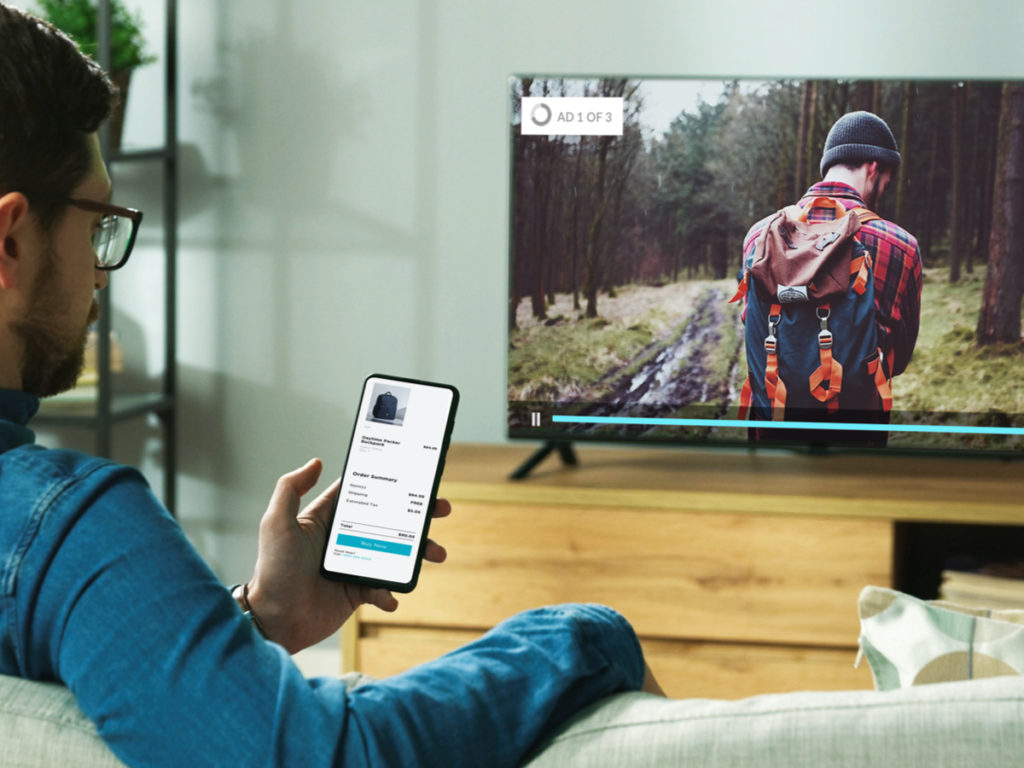Local TV Advertising Costs: 10 Factors to Consider
by Frankie Karrer
1 Min Read

4 Min Read
Historically, TV advertising has been an upper funnel tactic, a way to create awareness for a brand or product. As TV viewing has shifted with the rise of streaming, however, so has the advertising opportunity. Connected TV ads are now driving site visits and conversions, complemented by sophisticated measurement tools to track the return on ad spend (ROAS). Many streaming services are investing in new methods of allowing viewers to shop, but it may be as simple as leaning into already adopted behaviors.
The COVID-19 pandemic did more than just keep people inside and drive up streaming numbers. It also increased the use of QR codes as people looked for ways to create safer touch-free environments. eMarketer projects that there will be 99.2 million QR code users by 2024, an increase of 28 million from 2019. Restaurants aren’t the only ones leaning on the resurgence of the QR code. TV platforms are also taking advantage of the QR code resurgence, including codes on top of video ads to make it easy for viewers to navigate to offers from their phone. NBCUniversal highlights their product, aptly named “ShoppableTV,” allowing advertisers to overlay a call-to-action and QR code within their ad inventory.
The innovation for shopping from the TV doesn’t stop there. Many companies, such as Discovery, are creating new ad formats to help capture this shift in viewing behavior. Interactive ads allow users to engage with advertising in a way that wasn’t possible on linear TV, whether that’s browsing products or inputting a phone number to receive more information. Even YouTube, a traditionally desktop and mobile-focused offering, is leaning into the CTV opportunity by including messaging to visit a site opposite their “Skip Ad” button on their TV inventory.
All this innovation must move the needle, right? Although QR codes are vastly more popular these days, it still requires a lot of work from someone who is just looking to lean back and binge. Their phone needs to be out and open to their camera app, and within range for the QR code to register to be able to use the code. Not only that, but this has to happen in the length of a standard ad, just 15 or 30 seconds. As for other formats, many of these are new and have yet to be tested. That being said, many formats are asking a viewer to adopt a new behavior, which can be challenging when trying to drive conversions.
While innovation for shoppable units has been taking off, perhaps there is an easier solution that doesn’t require a beta test. 87% of TV viewers watch with a second screen in hand, whether that’s a mobile device, tablet, laptop, or e-reader. A majority of these viewers (65%!) use their secondary device to look up information and head to an advertiser’s site while they stream. Leaning into this already adopted behavior is a streamlined way to drive conversions from the TV screen and one that MNTN Performance TV takes full advantage of with cross-device attribution that tracks when a viewer sees an ad on their TV screen and when they visit an advertiser’s site (or convert!) on their second screen. Advertisers can use the premium Living Room Quality inventory to encourage viewers to take an action on their secondary device without having to use experimental ad budgets to test new formats.
While CTV ads can drive these lower funnel metrics and KPIs, there are some attributes that can make them even more effective. Analysis has shown that video ads that are eye-catching, using color, music, and emotion, are more likely to elicit a response and ensure viewers look up from their second screen. Effective ads also feature a call-to-action (CTA) that is both visual and audible, as well as a persistent URL so that the destination is clear. According to MNTN analysis (we’ve seen A LOT of ads), ads following this formula drive a 32% higher average visit rate, as well as 48% lower cost per visit – no beta testing required.
TV is continuing to evolve, but the ability to drive lower-funnel conversions is already a (successful) option in today’s advertising world.